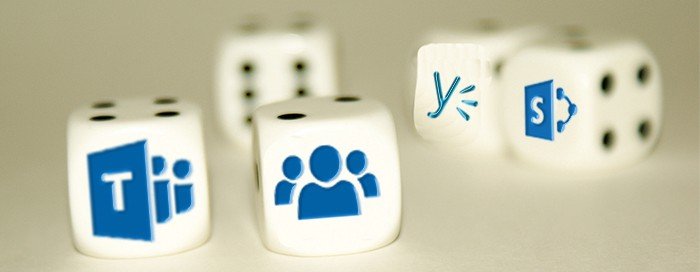Blog
Microsoft Teams as communication tool
In this second blog about the UCU innovation project, I want to discuss our pilot of MS Teams as a tool for communication with students.
Why MS Teams
Of course, since March, this is a silly question. In our university MS Teams has become the default for online interaction. And still MS Teams it is not integrated as an all-round communication tool. It is merely used as online meeting tool. If you look at written communication, Outlook outweighs the chat function in MS Teams.
In outlook, emails can be ordered chronologically or by sender and it is possible to organise your email by treads or to create folders. However, it is hard to keep an overview of the emails coming in. Because email is also used to share documents, email folders turn out to be an archiving system with little order. Only few have the discipline to order the inbox with a filing system and to download the received attachments and organise them in folders. In MS Teams chats and documents are organized per meeting, per team or per channel. And private chats are stored per person. There is no need to clean up a messy inbox.
Tutor Teams
For the UCU tutors, MS Teams is interesting as tool for the communication with students. Tutors are guiding a group of up to 33 students at the same time, having personal conversations and exchanging documents with them. The tutee group per tutor is not coherent (i.e. students from all three study years and with different academic curricula). Nevertheless, they are easily put together in a team, with the tutor as host. We therefore started a pilot with MS Teams with 2 tutors and around 60 students. In the middle of our pilot the corona crisis happened, and MS Teams was implemented as the default tool for all tutors to keep in touch with their students. We continued with the pilot, and we included this in the evaluation.
The student experience
First of all, the use of video calls is very much appreciated by both tutors and students. It helped students a lot to be able to have an online face-to-face meeting with their tutor during the challenges the corona crisis brought along. The chat function, however, was not seen as a serious replacement for email. It could be the name: something called ‘chat’ cannot be used for formal communication. Furthermore, students were hesitant in having a more personal conversation with the tutor through a one-on-one chat:
“I am not completely sure that my conversation with my tutor on chat is private and not seen by all the other students in the team.”
Email remained the default fall back option, since this is common practice for both tutors and students. Even when conversations started in MS Teams and moved to email, neither the tutor nor the student was inclined to move the conversation back to the MS Teams chat. Like mentioned in the previous blog, just facilitating is not enough to break with old habits. Even after specifically asking the participants to use MS Teams as the only tool for communication.
MS Teams in the online class room
With the move to online education, students were confronted with many different tools in their education. Many classes were taught in MS Teams. Some teachers continued to use Blackboard to share any education related content, while others chose to share content via MS Teams. And other teachers used platforms like Zoom or StarLeaf for their education. Next to these different learning platforms, different other tools or plugins were and are used for different purposes. Even within one class, teachers tended to switch between tools for similar functionalities.
In the focus sessions, students indicated that a lot of teachers and tutors communicate with Outlook and MS Teams at the same time, making it difficult to find the right information at the right time. The UCU students – following four courses at the same time – indicated they were getting lost. Of course, all the credits go to the teachers, being able to switch to online education in such a short time, learning to work with new tools and rethinking their education.
Recommendations
Clarity on the use of tools would help students and possibly teachers as well. Probably many UU programmes are doing exactly that now, or already have a found a more uniform way of working. Being familiar with the UCU perspective, I can imagine that the following could work:
- Blackboard could be the preferred learning environment for educational content, group work, et cetera.
- MS Teams can be used for lectures through video calling and – at UCU – for facilitating the tutor system through video calling, chat and file sharing. Moreover, MS Teams can be used for other communication outside of the classroom (through chat and file sharing).
- Other tools can be used as plug-ins for these two basic platforms, which makes their use – if designed for a specific purpose – also more clear, e.g. Peergrade or Feedbackfruits for peer feedback.
Of course, other choices then the above mentioned may be preferred. It will also depend on the programme and its specific characteristic and logistics. The main message that I want to get across is that a more uniform way of using tools for certain purposes would be very helpful for the students who need to switch between courses and activities, and have to adhere to preferences and choices of individual teachers regarding the use of tools.
6 november 2020
U moet ingelogd zijn om te reageren, gebruik het formulier aan de linkerkant om in te loggen met uw solis gegevens.




